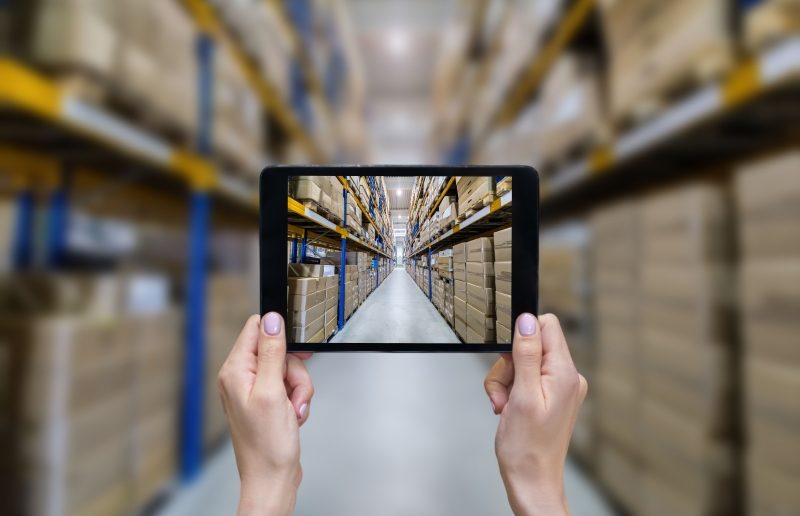
I recently sat down with Colin Wright, Global Solutions Director of Retail & Consumer Goods at Microsoft, to explore the opportunities that SAS and Microsoft’s new strategic partnership creates for retailers around the world.
Retailers are awakening to the fact that the near limitless scale and compute power of the cloud is the only road forward to stay ahead of competitors and meet customers’ demands. To achieve these results for our retail customers, SAS has partnered with Microsoft to make Azure the preferred cloud provider for the SAS Cloud.
By integrating our solutions and combining our expertise, our two companies are building the future of retail. Colin and I discussed the timeliness of this collaboration, and the exciting potential for retailers of all sizes.
Meeting the moment
Nearly every company in retail has a timeline for digital transformation. But those five year plans happened overnight as the global pandemic reared its head.
Colin has spent his entire career in retail and consumer goods, and he’s noticed a paradigm shift in the wake of COVID that was a long time coming. “Marketing budgets, headcounts, expenditure on campaigns and agency services, are all going to decline by about 20 or 30 percent over the next few months,” he predicted, “so, marketing automation, intelligence from analytics, building AI and machine learning into every aspect of our business, are all going to become critical. We’re going to have to do more, for the foreseeable future, with far less resources.”
Now leading the Know Your Customer initiative at Microsoft, Colin is focused on helping retailers understand the customer journey through analytics and building solutions to help them grow their business. He knows that, in a sector where 1% extra margin is a big deal, every competitive edge counts, noting that “if you can get that from just leveraging your data, that’s super exciting.”
Consider the Black Friday scenario, where it’s no good waiting until three weeks after the event for retailers to decide what they should be doing on a particular day—they need decisions within a matter of minutes, sometimes even seconds.
There’s little room for error, and as Colin noted, “everything that was a gap in retail business has now, since COVID, got a spotlight on it.” The historical thought processes around digital transformation involved months of committee meetings and strategies and restructuring, where now, retailers must seize every minute they have.
Getting more out of data analytics
The possibilities of analytics embedded in the cloud go well beyond filling business gaps and mitigating the immediate crisis. As customer expectations skyrocket, and brick and mortar stores lose relevance, it will be data that helps retailers innovate and execute transformational strategies.
When the customer determines how they want to shop, where they want to shop, and when they want to shop, the product needs to be there. So, the ability to manage inventory availability and predict what the consumer demand is going to be is a top challenge for every retailer.
Colin said that “you can’t do any of this unless you can push a button or pull a lever around the data to tell you what you should be investing in.” He pointed to his own experience managing inventory for the Windows phone.
Noticing a correlation between online search results and sales for handsets, Colin was able to estimate how much stock to buy based on internet searches for the latest Windows phone. Because he could accurately predict how much stock to purchase, he increased sales by 400% and reduced overstock by almost half. “Now,” Colin admits, “this is table stakes for retailers and intelligent systems.”
Redefining the cutting edge
SAS and Microsoft are no strangers to retail. And now, our combined forces are prepared to help redefine and execute on futuristic retail goals.
For instance, retailers need to anticipate what their customers want before they even know for themselves.
Colin agreed, “we have to go from estimating what the total market is going to do, to actually understanding what the individual is going to do. I need to go from one-to-many marketing and supply chain and inventory management to one-to-one. That takes a lot of data, and the ability to understand what’s relevant and what’s correlated to make sense of it.”
By making real-time decisions at the local level, retailers can respond and react very quickly in an informed and intelligent way. If they don’t, the customer is going somewhere else, and it’s easy to go somewhere else today. This elasticity creates disruption and pressure on retailers—but out of pressure comes diamonds.
Combining our strength
As many retail leaders have figured out, the consumer demand for convenience—for same-day delivery and personalized marketing—creates immense opportunity for value creation. The question, then, becomes how retailers will meet that demand.
To Colin, the answer is simple: retailers are “never going to have the profits or resources to do what Microsoft can do or what SAS can do, because it’s just not how they’re structured. They buy something for $10 and sell it for $11, so they can’t invest in research and development, in data scientists, and in the artificial intelligence they need—so we’ve got to work together. That’s the bottom line.”
With Microsoft Azure as the preferred cloud provider for the SAS Cloud, we are creating an analytics solution at the top of the stack that helps retailers adopt advanced analytics technology without having to build it themselves. Deep integrations of the SAS Viya platform with Azure services will help retailers spin up models and put them into production faster to gain insight from fast-moving data in real time.
“That’s where the relationship becomes really exciting,” Colin said, “because we can guarantee that the solution is scalable, it won’t fall over. It’s secure, and it’s reliable. And SAS can guarantee that if you utilize their capabilities around retail intelligence, you’ll grow your business, you’ll increase your on-shelf availability, you’ll drive your profitability up, and you’ll optimize your customer service.”
Indeed, SAS has a strong footprint in retail, allowing us to rapidly spin up environments and build IaaS systems for mid-sized retailers and global giants alike. This scalability and repeatability create competitive advantages for our customers, which are only heightened in the cloud.
Colin remarked that “the ability to take those SAS workloads and put them into the cloud for the foreseeable future is going to speed that whole use of data. It’s going to democratize it and it’s going to allow them to combine it with other data. It’s going to change the game for the retailers and the suppliers in the industry.” He went on, saying that “it’s exciting to us because a lot of our big, big customers—and even our mid-sized customers—have been using SAS for years. So, it’s not a change in behavior, it’s an acceleration in behavior.”
For companies that are still daunted by digital transformation, it’s important to understand that, with Azure, cloud migration isn’t a heavy lift and shift anymore. It’s now a very seamless, easy process. With SAS and Microsoft working together, digital transformation is safe, it’s secure, it’s agile, it’s fast, and it’s very cost effective. In fact, bringing analytics into the cloud is now the most common-sense thing to do when it comes from a cost and efficiency point of view.
Colin and I are eager to see how competitive companies will use our combined solution to generate value, trim costs, and grow sales. We will continue collaborating to refine and customize the SAS Cloud on Azure to meet the unique conditions of modern retail. I hope you’ll join us on this exciting journey.

